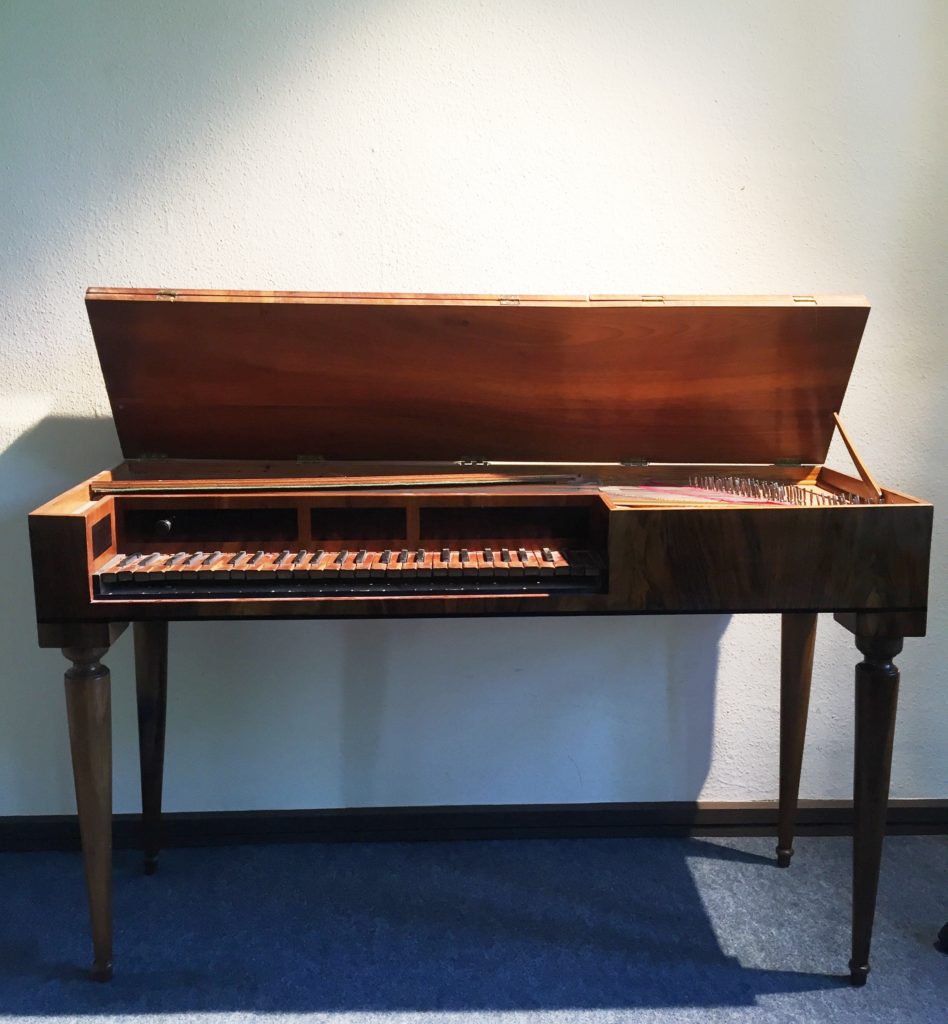Ignacy Skurski c. 1770
Description

| Date: | 1760 |
| Origin: | Poland |
| Serialnumber: | --- |
Tangent instruments are very rare and only a few where made in history and survived. They were made between 1760 and 1810 but in some historical sources they were mentioned before that time, too. Especially in the Italian/Sicilian area, tangent instruments were very popular.
Due to the simultaneous emergence of the Fortepiano and the desire for new sounds and improvement, tangent instruments were quickly displaced by the Fortepiano and fell into oblivion.
Based on its design and the external appearance this tangent piano dates back to around 1770.
It has a small compass of 4 ½ octaves (C – f3). There are no dampers just a small stop for a lute. Furthermore, the instrument is single strung just in the bass and double strung in the other notes. The action is hidden in a small box and there are two tangents per key (leathered and bare wood). By using a small stop the player can change between the two registers. So far, this type of action only exists in Polish instruments, so it can be assumed that the instrument was probably made in the Polish area.
The instrument was in absolute original condition and showed no previous restoration or modifications, all of the tangents are original. It was restored to high standards and convinces with a strong and overtone-rich sound.
There is no signature but it is likely that it comes from the workshop or the circle of Ignacy Skurski in Sandomierz.
Further research is currently in progress.
Sources:
- H. Herrmann: Die Regensburger Klavierbauer Späth und Schmahl und ihr Tangentenflügel, Erlangen: Karl Döres 1928.
- K. Restle: Bartolomeo Cristofori und die Anfänge des Hammerclaviers. München 1991.
- M. N. Clinkscale: Makers of the Piano, 1700–1820. Oxford University Press, Oxford 1993.
- M. Latcham: Franz Jakob Spath and the Tangentenflügel, an Eighteenth-Century Tradition, Galpin Society Journal 2004, Artikel LVII, S. 150
- S. Rampe: Mozarts Claviermusik – Klangwelt und Aufführungspraxis, Kassel, Basel, London, New York, Prag: Bärenreiter 1995
- G. di Stefano: Tangentenflügel e altri pianoforti con martelletti non imperniati. 2007
- B. Vogel, Fortepian polski. Budownictwo fortepianów na ziemiach polskich od poł. XVIII w. do II wojny światowej, (Warszawa, 1995)
- B. Vogel, ‘Two Tangent Square Pianos in Poland’, Journal of the American Musical Instrument Society 20 (1994)
- B. Vogel, ‘„Szpinet ze strunami i klawiszami”. Najstarszy zachowany fortepian polski’, Zeszyty Sandomierskie 39 (2015)
© Eric Feller – Early Keyboard Collection – May 2018
| Length: |
| Width: |
| Height: |
| Circumference: | 4 ½ octaves (C – f3) |
| Mechanics: | tangent action, 2 tangents per string, no dampers |
| Pedals: | 1 hand stop (piano - forte), lute |
| Signature: | --- |

